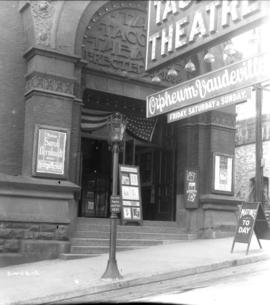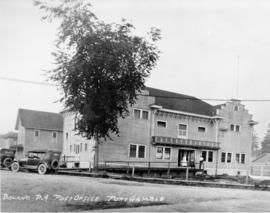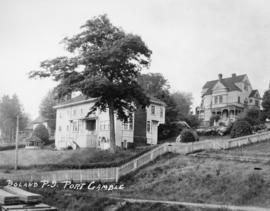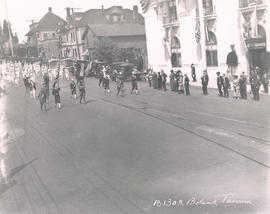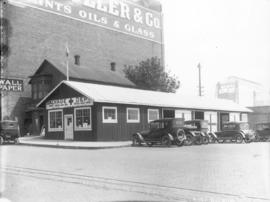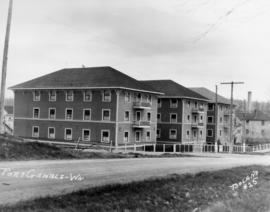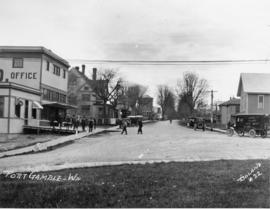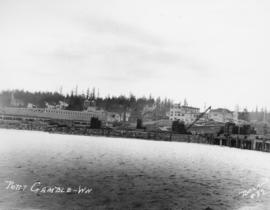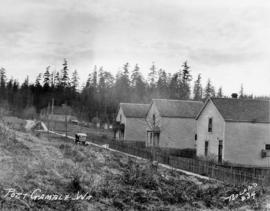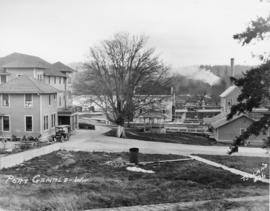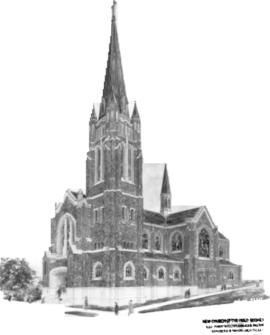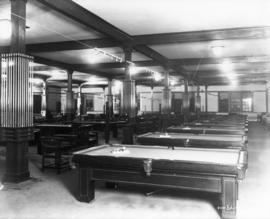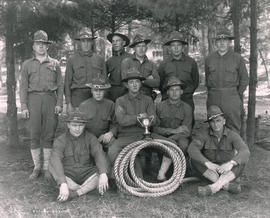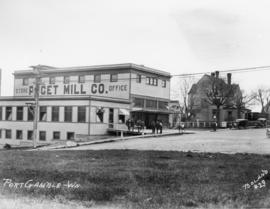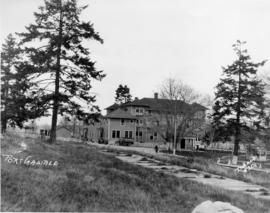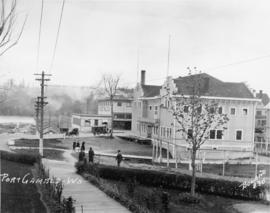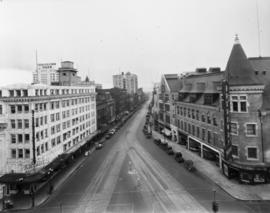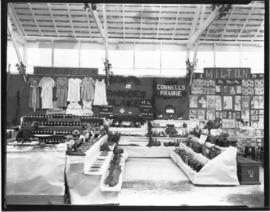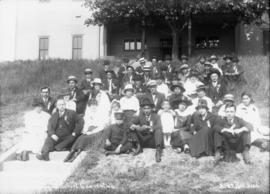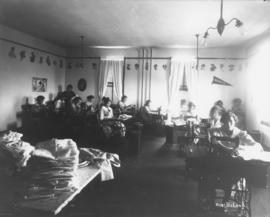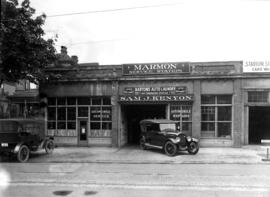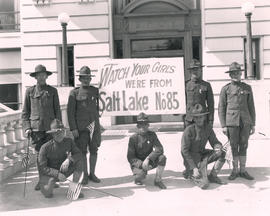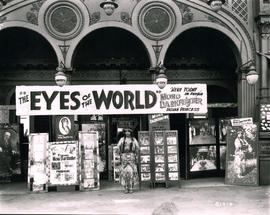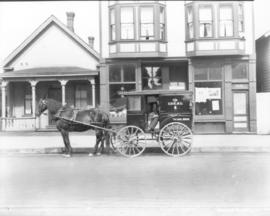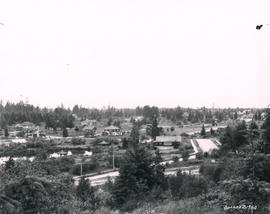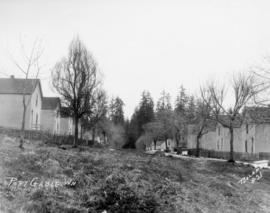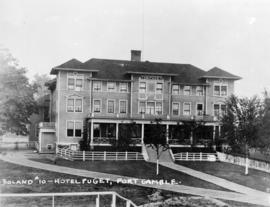- Item
- 1918-06-10
Part of Marvin Boland Photographs
Sarah Bernhardt appeared at the Tacoma Theatre, 902-14 Broadway, from June 14-16, 1918. Miss Bernhardt, probably the most famous actress in the world, and her company were performing the closing act of "Camille" as the closing bill of the Orpheum Vaudeville season. Also on the bill were soprano Marion Weeks, Mayo & Lynn, Madden & Ford, Albert Donnelly and Bensee & Baird. The theater was built by the Tacoma Opera House Co. and opened in 1890. It originally seated 1,300 and was advertised as having the "largest stage on the Pacific Coast." Later known as the Broadway Theater and finally as the Music Box, it was destroyed by fire on April 30, 1963. BU-11260; TPL-2112; Boland-B1193 (TDL 6/14/1918)
Tacoma Theatre (Tacoma); Theaters--Tacoma--1910-1920; Theatrical productions--Tacoma--1910-1920; Marquees; Bernhardt, Sarah--Associated objects;
